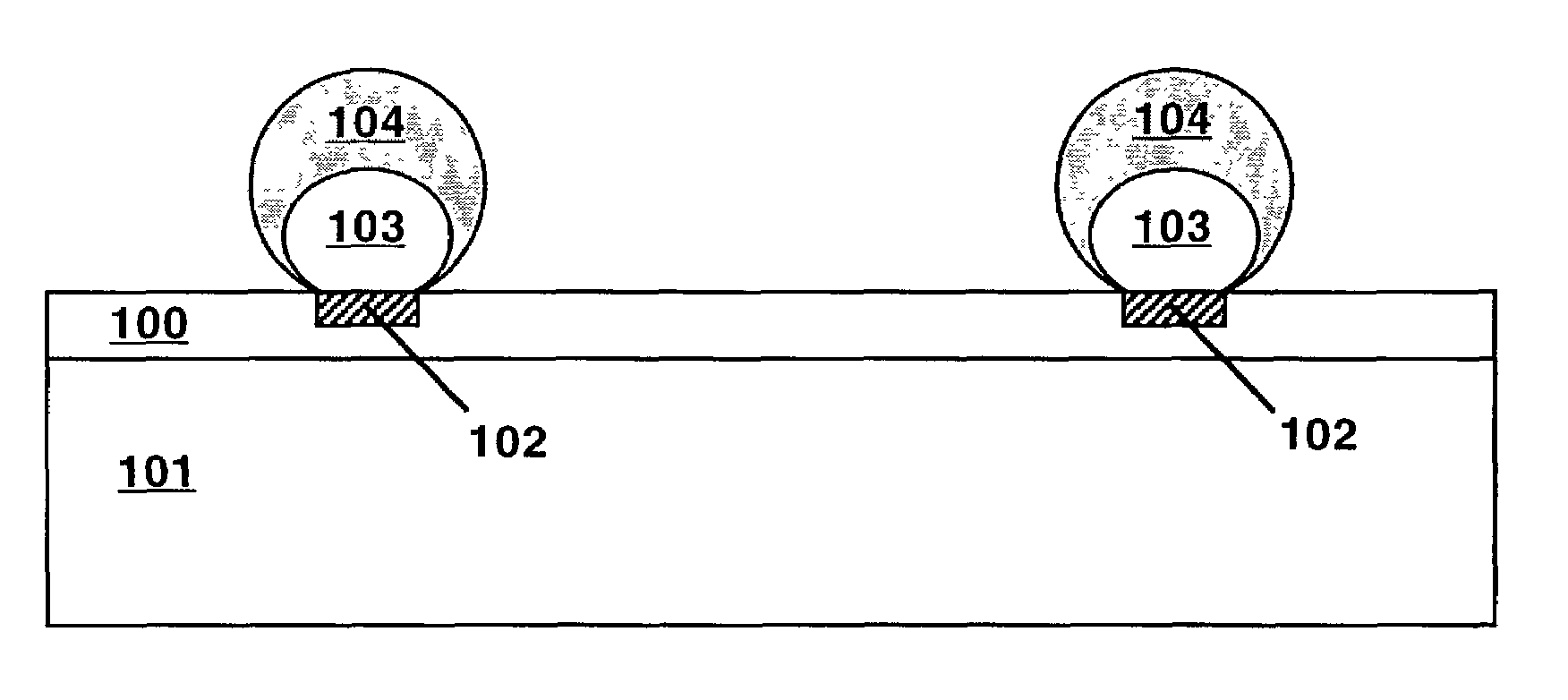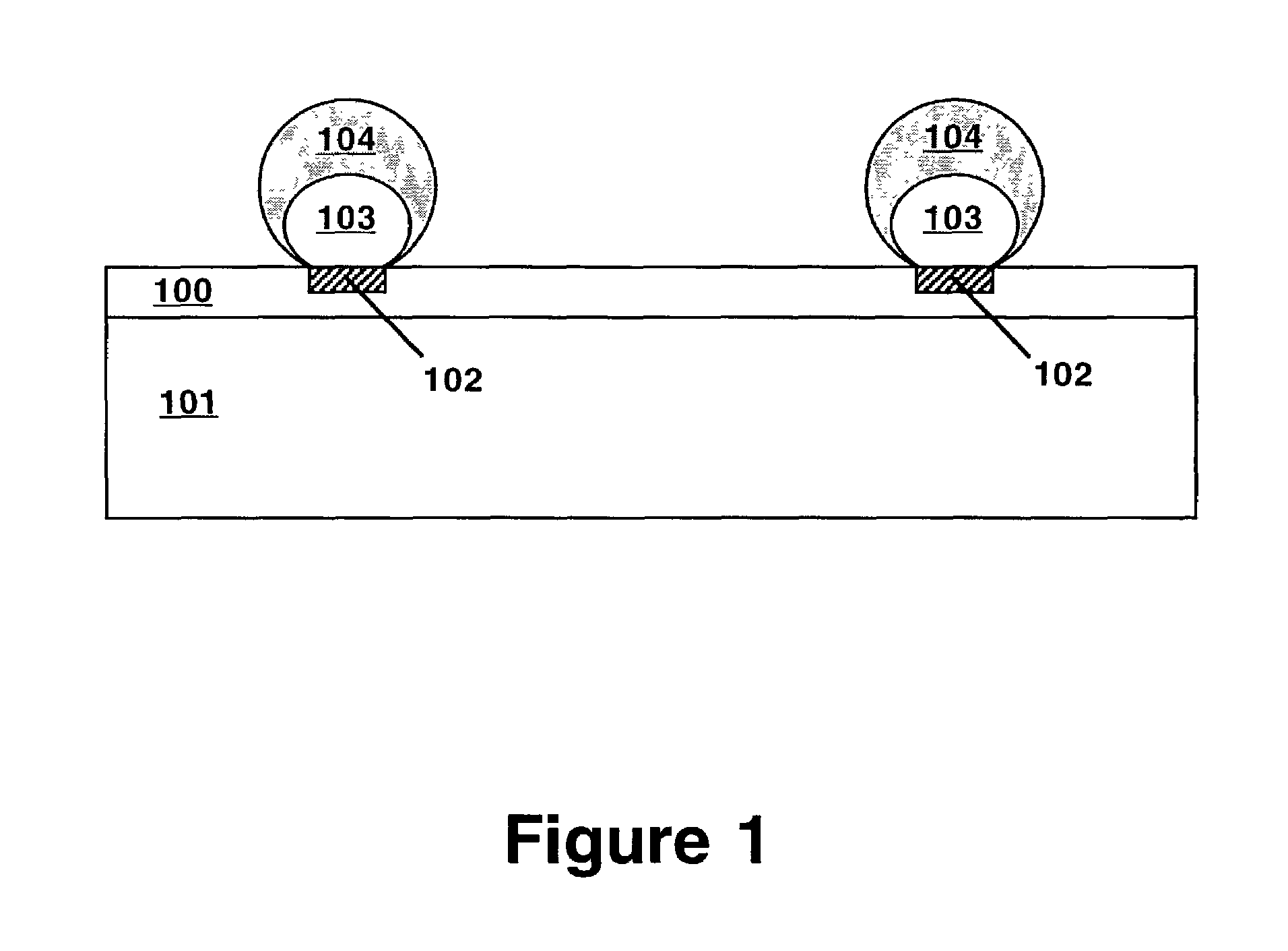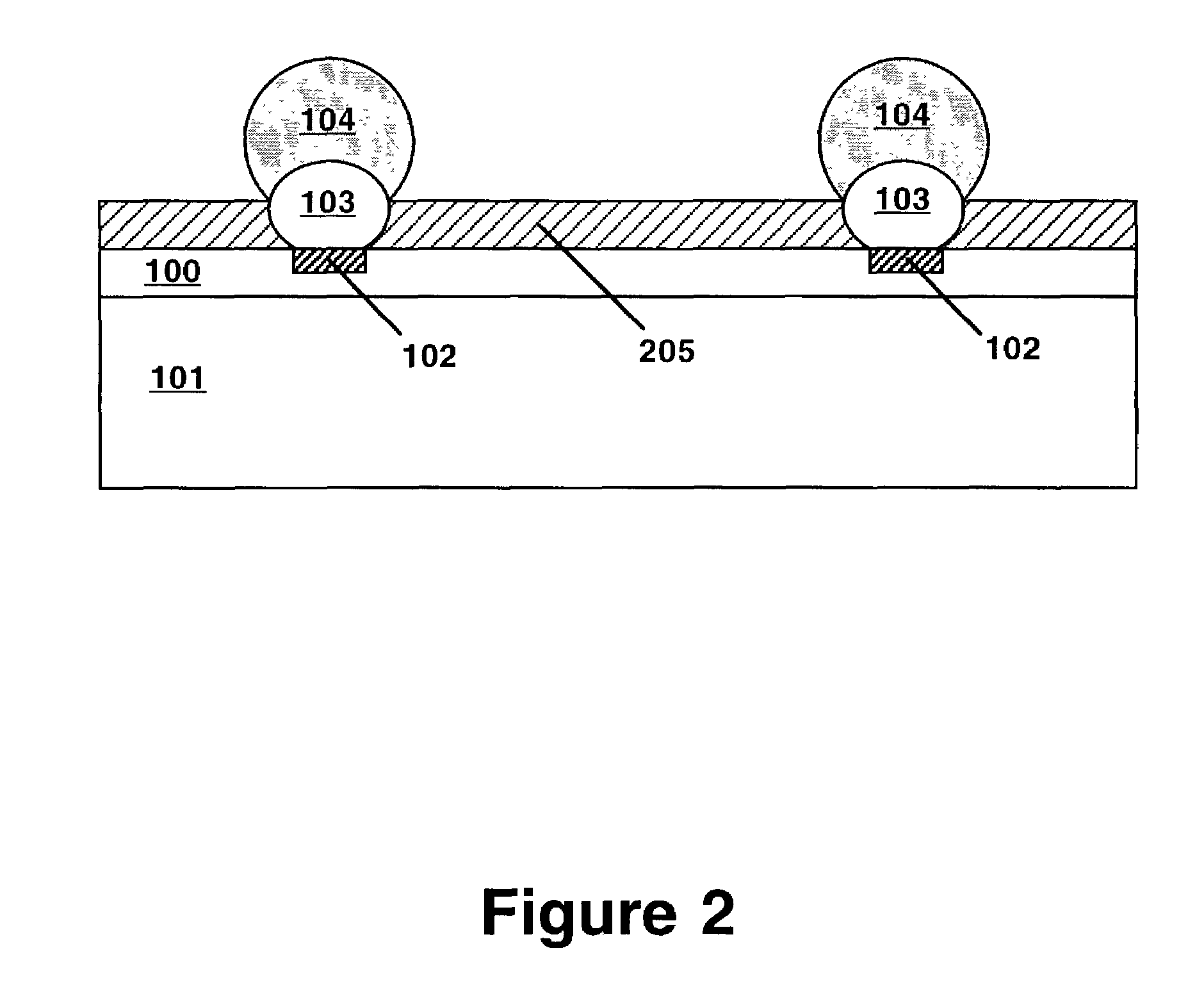Locally-distributed electrode and method of fabrication
- Summary
- Abstract
- Description
- Claims
- Application Information
AI Technical Summary
Benefits of technology
Problems solved by technology
Method used
Image
Examples
example 1
[0030]After being subjected to platinum electrodeposition at 0.40 mA / cm2 to 0.60 C / cm2 of charge, FTO and ITO films were examined by scanning electron microscopy (SEM) and energy dispersive analysis of x-rays (EDAX). The FTO surface had more texture but a relatively uniform distribution of approximately spherical Pt nuclei (about 0.2 μm in diameter) was obtained for both materials. The composition of the Pt nuclei was verified by EDAX analysis. The density of nuclei on the ITO sample was about 3×108 / cm2, which for spherical nuclei of 0.2 μm diameter would block 1% of the light and give a surface area of 4% of the geometric area. The density of the Pt nuclei on the FTO sample was comparable to that for the ITO sample. Adhesion of the Pt nuclei was at least reasonably good since the density remained the same after vigorous water rinsing. These data show that Pt nuclei can be deposited at defect sites on ITO and FTO at a density appropriate for REM counter electrode use. For this nucle...
example 2
[0031]Platinum was electrodeposited on an ITO film at 0.40 mA / cm2 to 5.2 C / cm2 of charge. From SEM / EDAX analysis, Pt islands that appeared to be roughly spherical (about 0.3 μm diameter) were distributed at a density of 2×108 / cm2 uniformly over the ITO surface. The current carrying capability of this Pt dot matrix array was evaluated by cyclic voltammetry (50 mV / s) in a typical REM electrolyte comprised of 1.5 M AgI and 2.0 M LiBr in gamma-butyrolactone (GBL) solvent. A silver film on a platinized ITO substrate was used as a combination counter electrode and reference electrode. Good performance for the Pt dot matrix electrode up to a current of 2.0 mA / cm2 (geometric area) was indicated by Ag electrodeposition current that increased linearly with negative electrode potential and exhibited very little overvoltage and hysteresis, and by anodic current that decreased to a low value after deposited Ag was electrochemically stripped from the electrode. The integrated charges associated w...
example 3
[0032]Platinum was electrodeposited on an ITO film at a constant electrode potential of −0.37 V vs. SCE to 0.80 C / cm2 of charge. SEM / EDAX analysis detected approximately spherical Pt nuclei (about 0.1 μm diameter) at a density of 1×108 / cm2 distributed uniformly over the ITO surface.
PUM
| Property | Measurement | Unit |
|---|---|---|
| Temperature | aaaaa | aaaaa |
| Density | aaaaa | aaaaa |
| Current | aaaaa | aaaaa |
Abstract
Description
Claims
Application Information
 Login to View More
Login to View More - R&D
- Intellectual Property
- Life Sciences
- Materials
- Tech Scout
- Unparalleled Data Quality
- Higher Quality Content
- 60% Fewer Hallucinations
Browse by: Latest US Patents, China's latest patents, Technical Efficacy Thesaurus, Application Domain, Technology Topic, Popular Technical Reports.
© 2025 PatSnap. All rights reserved.Legal|Privacy policy|Modern Slavery Act Transparency Statement|Sitemap|About US| Contact US: help@patsnap.com



